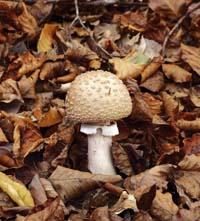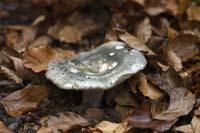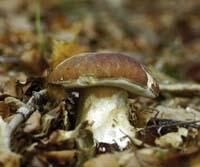Season of mushrooms

It is no coincidence that many species of mushrooms appear in autumn. The explanation is in the very nature of the mushroom. In fact, the mushroom is the fruit of a fungus (known to experts as the fructiferous body, the carpohore). Many of the mushrooms that give mushrooms are buried and feed on the roots of the trees. Trees in general lose strength at the end of summer and autumn, so the fungus takes advantage to "appropriate" the tree. In this way, it will give its fruit in autumn.
However, the relationship between the tree and the fungus is symbiotic, that is, the food that needs the fungus (the organic matter) comes from the roots of the tree, in exchange for collecting from the hand of the fungus substances that the tree needs like water and mineral salts. For this purpose, the hyphae of the fungus (filamentous structures that form the fungus) collect the roots of the tree, forming a solid association: the mycorrhiza.
The relationship between the tree and the fungus is very narrow. For this reason, some species of mushrooms grow in forests of a certain tree species, such as pinewoods, niscalo, Lactarius delicius, or hayeds and robledales, such as the black mushroom, Boletín us aereus, etc.
However, only some species of fungi form mycorrhizae. Other fungi are parasites and others feed on dead organic matter, so that the hyphae of some fungi grow in trunks, excrements or stems. These fungi are called saprofitos and contribute, among other things, to the degradation of waste. Many of these mushrooms also give mushrooms in autumn, such as those growing in litter.

Mushroom, roof of the house
Thus, although the mushroom is the most prominent part, it is nothing more than the final end of a fungus that normally grows hidden, an elegant structure that uses to expand the spores. These fungi are reproduced by spores. Each mushroom releases millions of spores; and if one of them reaches an area with the right conditions, it forms a primary mycelium, the vegetative body of the fungus.
The competition between fungi is enormous. The mycelia grow much, but they are mutually disturbed and not all mycelium manage to donate mushrooms. However, in most cases, this primary mycelium is not fruitful, but it needs the mycelium of another spore compatible to form a secondary mycelium, that is, to create a mycelium that is productive. When the humidity and temperature conditions are adequate, that secondary mycelium will give mushrooms.

Depending on the species, the mushroom can be sustained on a breeding surface (the yellow skin, the Stereum hirsutum, for example, grows in the fallen branches), it can grow in the subsoil (famous truffles like the Tuber melanosporum) or rising above the terrestrial surface, adopting a classical structure formed by a leg and a beret - there are other more peculiar structures, with aspect of claws, etc.
In the case of the classic structure of “legs and hats”, as the leg stretches, the beret is spreading, revealing the hymenium (structure that houses the spores) that is under the beret. Once the spores arrive they will be loose and willing to give life to another fungus to restart the cycle. Mushrooms with other structures have other strategies to expand spores, but the goal is ultimately the same.
The mushroom takes a few days to grow and expand the spores, and then wilt (if you do not eat any animal before). But the mycelium is still alive, and when it has the right conditions again, it begins to give mushrooms. For this reason, mushroom collectors turn again and again to the same places, but with the itching they keep their secret.

Thank you for your collaboration with the Department of Mycology of Aranzadi.





